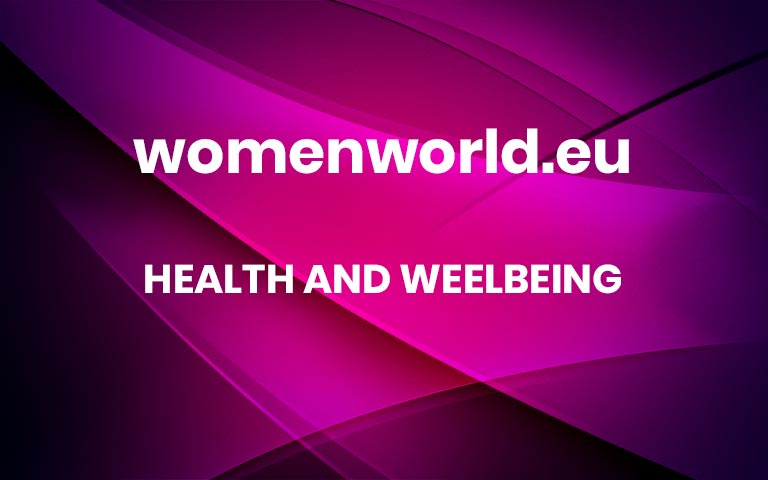10 Cold And Flu Remedies That Actually Work
When you’re sick, you’ll try just about anything to feel better – even that thing you heard about from your best friend’s sister’s neighbour (who’s very much not a doctor, BTW). But uh, some cold and flu remedies aren’t as legit as they seem (yeah, I’m looking at you, echinacea). Here’s how to know which ones can absolutely help you feel better, and which ones, well, are flat-out unhelpful.1. Nasal SpraysIf you’re congested, you want to target the source of your woes (i.e., your nose). Intranasal steroid sprays can reduce inflammation in your nasal passages, moisten mucus membranes to limit irritation, and help flush out secretions to ease congestion. Dr. Kathleen Dass, an allergist and immunologist, recommends treating your symptoms with one of these sprays, saying they may even work better for symptom management than antibiotic use, if your cold or flu turns into a sinus infection too (you’ll still want to snag those antibiotics though, to knock out the underlying infection).2. RestYour mother always told you to get plenty of rest when you’re sick, right? It turns out there’s some science behind that; Dass notes that research has shown deep, restful sleep plays a factor in increasing your body’s antibodies, especially after vaccination.But that’s not the only reason to catch some extra zzz’s during cold and flu season: a 2024 literature review found that chronic sleep disturbances are linked to higher inflammation levels and a subsequent risk of infections. 3. Saline IrrigationSaline irrigation (like, using a neti pot or an OTC saline spray) isn’t necessarily as helpful as steroid nasal sprays, though it can make you feel better in the short-term: “They have limited evidence supporting them, [but] the rinses can provide symptomatic relief by allowing you to clear your mucus,” says Dass.Since the only ingredient is water (salt or distilled, sterile water), these rinses may be a good choice for people avoiding medication, though Dass advises cold and flu sufferers not to use a saline rinse if you have pressure in your ears – it may make it worse.Another thing worth noting: use distilled, sterile, or previously boiled water in that neti pot to avoid contamination, per the FDA. You can also use both steroid nasal sprays and saline irrigation methods together – just make sure to use the saline irrigator first to clear out sinuses, followed by the steroid spray, to increase its effect, says Dass.4. HydrationYour mother probably also told you to drink lots of fluid when you’re sick, and she wasn’t wrong about that either. “Cytokines, [a group of proteins] which help us fight infections, can also cause headaches, fevers and aches,” says Dass. “Staying hydrated can help boost your cytokine immune response [and reduce those symptoms].”Dass recommends getting hydration from a variety of sources, not just water, so broths, electrolyte drinks and fruit juices count, too, but avoid drinks that contain a lot of sugar, as well as caffeine and alcohol, as they may make you feel worse.READ MORE: 5 Effective Ways To Beat The Dreaded Afternoon Slump5. DecongestantsNasal decongestants and oral decongestants work by narrowing the blood vessels in the lining of the nose, which reduces blood flow and shrinks the nasal tissues.Basically, they make breathing through your nose way easier – but there are a few caveats: You can’t use a nasal decongestant for more than three days without risking dependency and worsening congestion after stopping; oral decongestants, on the other hand, aren’t necessarily linked to dependency, but aren’t as effective and come with a few potential side effects, says Dass.“[Be cautious] with oral decongestants, as they can cause dizziness, agitation, increased heart rate, or increased blood pressure,” says Dass. “You [also] should not mix alcohol with an oral decongestant.”READ MORE: 5 Ways To Get Rid Of ‘Cortisol Belly’ – And A Hormone Expert Reveals How To Tell If You Really Have It6. Multi-Symptom ProductsInstead of taking three or four different over-the-counter (OTC) drugs to combat your variety of symptoms, take a multi-symptom product to simplify the process. Dass says these products usually have anti-inflammatories to treat fever and minor aches; antihistamines for nasal and throat symptoms; decongestants for congestion; and dextromethorphan to relieve a cough.But pay attention to the ingredients in whatever brand you’re using to make sure they don’t react with any other medications you’re currently taking. Be aware of any that contain diphenhydramine (a.k.a. Benadryl), which can make you sleepy, and could be dangerous if you’re driving.7. Vapour rubNo smell is more synonymous with sickness than that of vapour rub, like Vicks VapoRub, the topical gel containing menthol and eucalyptus. But there’s no denying that it works as a colds and flu remedy, especially for nighttime coughs and congestion. “Vapour rubs will not help cure colds or influenza,” says Dass, “but it may help provide symptom relief.”That’s because the menthol in those rubs tricks your brain into thinking you’re breathing through an unstuffed nose, which is really useful when you’re trying to get some much-needed sleep. (But don’t share your vapour rub with very little kids – Dass says it’s not safe to use in children under 2.)8. Steam and HoneyFor severe congestion that just won’t quit, Dass recommends thinning your mucus – so you can clear it out more effectively – with a number of different methods.In addition to soothing a sore throat, honey can also loosen congestion, says Dass, so add some to a cup of tea (bonus points for hydration!). Sitting in a steamy bathroom while the hot water runs can offer the same relief. If you’re still having a hard time breaking up congestion, an OTC medication containing guaifenesin (like Mucinex) can promote mucus thinning as well.READ MORE: Missed A Dose? It Could Be Costing More Than You Think9. Pain RelieversIf your cold or flu has you feverish and achy, an OTC pain reliever can provide some relief, like paracetamol, aspirin, ibuprofen, and naproxen.Most people can take the recommended doses (typically two pills) every four to six hours, but Dass notes that no one should exceed more than 4,000 milligrams (or eight extra-strength tablets) of paracetamol in a 24-hour period; and that people with GI issues, like ulcers or heartburn, should avoid ibuprofen.10. ZincAccording to the National Center for Complementary and Integrative Health (NCCIH), zinc (taken orally, as with lozenges, tablets, or syrup), can help reduce the length of colds when taken within 24 hours after symptoms start.Again, that’s only for oral forms of zinc, though – per the NCCIH, intranasal zinc (e.g., swabs and gels) have been linked to severe side effects like an irreversible loss of the sense of smell. It should also be noted that oral zinc comes with its share of side effects, too, like gastrointestinal upset, as well as drug interactions with antibiotics and penicillamine (a drug used to treat rheumatoid arthritis).Remedies To Skip:1. Vitamin CVitamin C can definitely be part of a healthy diet, but where most people go wrong with this remedy is waiting until they actually feel sick to start taking it. “For vitamin C to be most effective, you have to take it every day,” says Dass. It has a cumulative effect, working better when it’s used to keep you healthy (as opposed to magically making you better once you’re already sniffling).And don’t fall for the idea that a high dose of vitamin C will give you a bigger benefit: Dass says that the recommended dose is 200 milligrams daily (and it’s best to get that through the foods you eat). Taking more than 400 milligrams won’t mean double the benefits – you’ll just pee out the excess that your body doesn’t use.2. ProbioticsIt seems like a lot of our health problems can be linked to our guts, which is why using probiotics for any number of ailments seems like a reasonable strategy.But while they might work for your digestive health, Dass says probiotics haven’t been proven to speed up the recovery of colds and influenza. The National Center for Complementary and Integrative Health agrees, saying that the evidence linking probiotics to respiratory health is weak and some people may experience gastrointestinal side effects during probiotic use, like gas.3. ChilliThe primary ingredient in spicy food, capsaicin, has potential health benefits. However, high-quality clinical evidence does not confirm its benefits in helping recover from colds and flu. Plus, if you eat too much, it could upset your stomach – not ideal when you’re already stuffy.4. OnionTempted to stick your foot in an onion-stuffed sock? Studies show that the antioxidant, antimicrobial and anti-inflammatory properties are promising for the treatment of respiratory conditions like asthma and also for illnesses like colds and flu. However, studies are still needed to narrow down specific forms of onion and their effectiveness. For instance, scientists aren’t sure if cooking onions hinders their efficacy. Also, contamination of the onion or overdose is also possible. Stick to the usual onion consumption: curries and tuna salad.This article by Sarah Bradley was originally published on www.womenshealthmag.com. More



